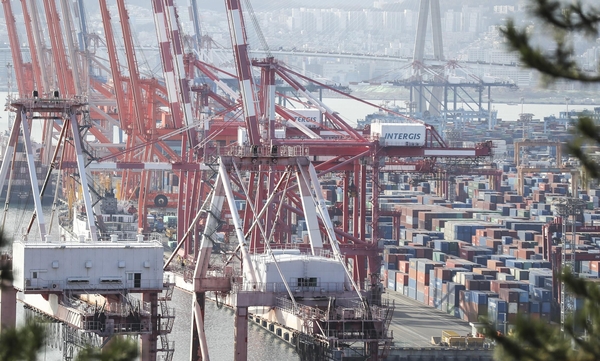Input 2021.01.08 08:00
Export increase turn… Increased exports of semiconductors, information communication, and chemical products
Korea’s current account surplus reached about $9 billion in November last year. Compared to a year ago, the surplus has increased for six consecutive months, and the current account has escaped from the aftermath of the novel coronavirus infection (Corona 19). With exports shining mainly on semiconductors and information and communication devices, the product balance increased significantly. The service balance is also showing a decrease in the deficit as cargo transportation increases.
According to the’International Balance for November 2020 (provisional)’ announced by the Bank of Korea on the 8th, the current account in November last year recorded a surplus of $8.97 billion. Compared to the same month of the previous year ($73.99 billion), it is an increase of $1.58 billion, and the surplus is increasing for the sixth month. The current account is a statistic that sums up all economic transactions such as capital and labor, along with the import and export of goods and services between countries.

The deficit in the service account was $720 million, reducing the deficit by $1.1 billion. This is because the transportation balance turned to a surplus of 400 million dollars. With the recovery of global trade, the transport balance has been in the black for four months since last August. Since the coronavirus outbreak, the sky road has been blocked, and the travel budget deficit continues to decline. November’s travel account was in a deficit of $500 million, which was about half a year ago ($900 million). This is because both the number of inbound and outbound travelers decreased by about 96%.
The principal income balance, reflecting the flow of wages, dividends, and interest, was estimated at $420 million. This was half of a year ago ($970 million), and the dividend income balance ($490 million) turned into a deficit. As dividend payments from foreign direct investment corporations increase.
Financial account net assets, representing capital flows, increased by $8.95 billion. Direct investment increased by $2 billion and securities investment increased by $5.08 billion. In the case of securities investment, foreign investment in domestic securities ($4.32 billion) has also increased, but it has expanded further as Koreans’ overseas investment in securities ($9.41 billion) has increased significantly.
